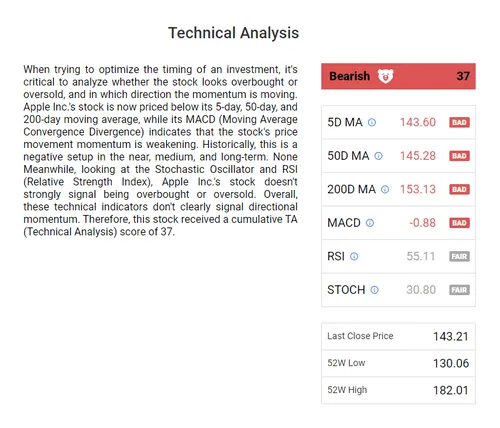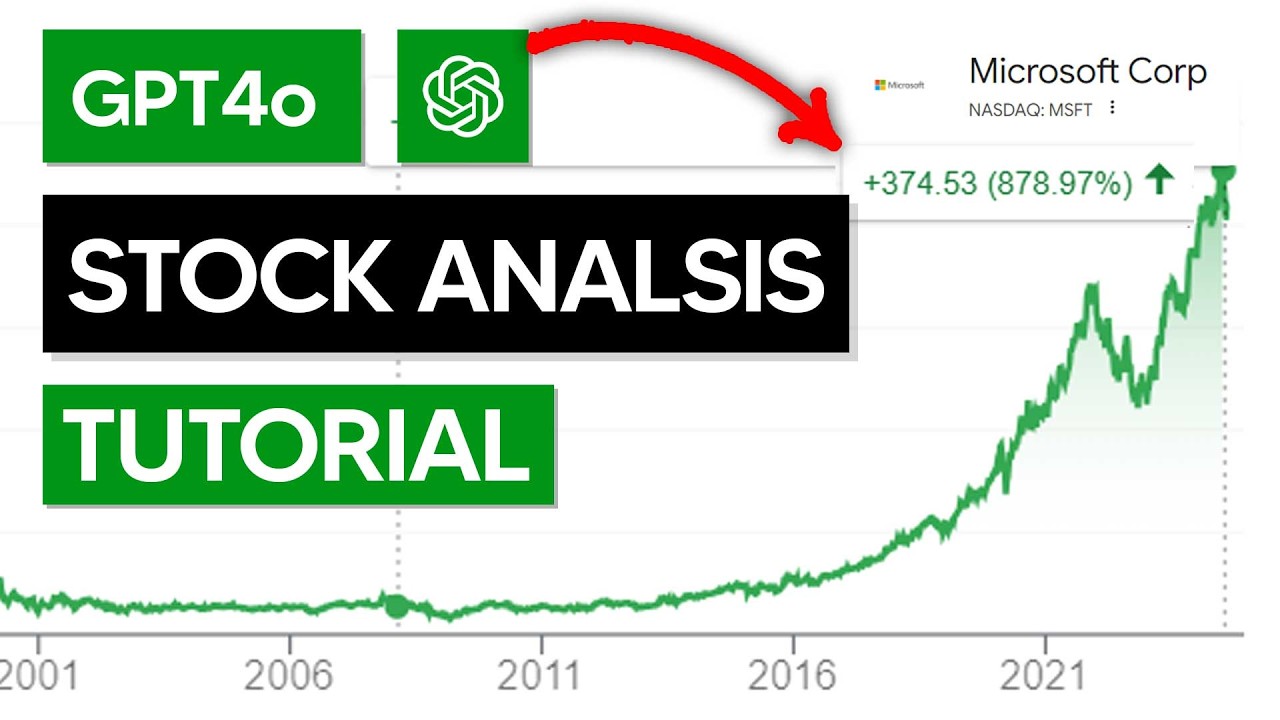20 New Pieces Of Advice For Choosing Ai Invest Sites
20 New Pieces Of Advice For Choosing Ai Invest Sites
Blog Article
Top 10 Tips For Evaluating The Market Coverage Of Ai Stock Predicting/Analyzing Trading Platforms
Market coverage plays an important aspect in evaluating an AI software for stock prediction and analysis because it determines your ability to access a vast range of assets and financial markets. Market coverage is crucial because it allows you to diversify your portfolio, learn about the world's markets, and adjust to different strategies for trading. Here are the top 10 tips to assess the market coverage of these platforms:
1. Evaluate Supported Asset Classes
Stocks: Ensure that the platform has stocks from all major stock exchanges, such as NYSE, NASDAQ and LSE.
ETFs: Verify that the platform provides an array of ETFs to provide diversified exposure across categories, themes and even regions.
Options and Futures: Find out whether the platform is compatible with derivatives like options or futures, as well as other leveraged products.
Forex and commodities: Determine whether the platform can support currency pairs, precious metals, agricultural products, energy commodities, and other commodities.
Cryptocurrencies: Check to see whether your application supports most popular cryptocurrencies, including Bitcoin, Ethereum and altcoins.
2. Check Geographic Coverage
Global markets. Ensure your platform covers the most important global markets that includes North America Europe Asia-Pacific and emerging markets.
Regional focus: Check whether the platform is focused on certain markets or regions that match your trading preferences.
Local exchanges. Make sure the platform allows exchanges local or regional to your location.
3. Assessment Real-time against. Delayed Data
Real-time Data: Be sure that your platform is equipped with real-time information for trading, and for making timely decisions.
Delayed information: Determine whether delayed information is accessible for free or at discounted this could be enough for investors who have an eye on the long term.
Data latency: Determine whether the platform reduces latency in real-time feeds of data specifically in high-frequency trading.
4. Analyze historical data availability
In depth of Historical Data Check that the platform has a large amount of historical data to backtest as well as analysis and testing (e.g. 10or more years).
Examine the any granularity. Historical data could include intraday, daily and weekly granularity.
Corporate actions: Check if the historical data include dividends and stock splits.
5. Examine the market depth as well as order book data
Level 2 data: Ensure that the platform has Level 2 data for price discovery and better execution.
Bid-ask Spreads: Ensure that the platform displays real-time spreads for bid and ask for precise pricing.
Volume data - Determine if the platform contains detailed volume information for analyzing market activities and liquidity.
6. Examine the coverage of Indices Sectors
Major indices: Make sure that the platform contains major indices for benchmarking, index-based strategies, and other uses (e.g. S&P 500, NASDAQ 100, FTSE 100).
Data specific to a sector to provide targeted analysis, check if the platform offers information on a specific sector (e.g. technology, healthcare, or energy).
Custom indexes. Check if you can make or monitor custom indices according to your requirements.
7. Test the integration of News and Sentiment Data
News feeds - Ensure that the platform integrates real-time news feeds that contain market-moving news from trusted (e.g. Bloomberg or Reuters) sources.
Sentiment Analysis: Check if the platform offers sentiment analysis tools that are built on social media, news or other sources of data.
Event-driven strategy: Make sure that the platform supports event driven trading strategies (e.g. announcements of earnings economic reports).
8. Verify Multimarket Trading Capabilities
Cross-markets trading: The platform should permit trading across multiple markets or asset classes through a single interface for users.
Currency conversion: Check if the platform is compatible with multicurrency accounts, and currency conversions for international trading.
Support for time zones: Check whether the trading platform you are using is compatible with various time zones to trade on global markets.
9. Examine coverage of alternative data sources
Check for alternative data sources.
ESG data - Check that the platform provides environmental, governance, and social information (ESG). This is essential for a the socially conscious investment.
Macroeconomic Data: Make sure that the platform has macroeconomic indicators, such as inflation, GDP and interest rates.
Review user feedback and market reputation
User reviews: Read reviews from users to assess the market coverage of the platform and its quality of service.
Check the reputation of the platform in terms of its coverage and awards.
Case studies and testimonials These will demonstrate the platform's performance in specific asset classes or markets.
Bonus Tips
Trial period: You can try an demo, trial or a free trial to check the market coverage and the quality of data.
API access: Determine whether the platform's API allows accessing market data in a programmatic manner for customised analysis.
Customer support: Make sure the platform can help in the case of market-related questions or data issues.
Utilizing these guidelines you can accurately assess the coverage of AI analysis and stock prediction platforms. You can then choose the trading platform that gives you the markets and the data you require for successful trades. Comprehensive market coverage lets you to diversify and expand the possibilities of your portfolio. It also assists you adapt to market changes. Read the recommended he said about chatgpt copyright for blog advice including best stock advisor, stock analysis app, ai stock price prediction, trader ai intal, trade ai, best ai trading software, coincheckup, ai trader, ai options trading, free ai tool for stock market india and more.
Top 10 Tips For Assessing The Risk Management Of Ai Stock Predicting/Analyzing Trading Platforms
Any AI platform for analyzing or predicting stocks must incorporate risk management that is crucial to safeguard your capital and limiting losses. A platform that has robust risk management tools will assist you in navigating volatile markets, and make informed decisions. Here are ten top tips to help you assess the risk management abilities of these platforms.
1. Evaluation of Stop-Loss & Take-Profit Features
Customizable Levels: Make sure the platform lets you set individual stop-loss levels and take-profit targets for strategies or trades.
Check the platform to see whether it has a trailing stop feature that will automatically adjust in the event that the market changes towards you.
Guaranteed stops: Check if the platform offers guarantee stop-loss orders. These assure that your trade is completed at the exact price regardless of market volatility.
2. Assessment Position Sizing Instruments
Fixed amount - Ensure that you can define the size of your positions in relation to a specific amount.
Percentage of your portfolio: See whether you can establish the size of your positions as a percentage of your overall portfolio to reduce risk proportionally.
Risk-reward rate: Check to see if it is possible to set the risk-reward percentage for specific strategies or trades.
3. Make sure you have Diversification Support
Multi-asset trade: Make sure that the platform allows trading across multiple types of assets (e.g., stocks, ETFs, options and forex) to diversify your portfolio.
Sector allocation Check to find out whether there are any tools available for managing and monitoring exposure to the sector.
Diversification of the geographic area. Examine whether your platform permits you to trade on international markets. This could aid in spreading the risk across different geographic areas.
4. Review leverage control and margins.
Margin requirements: Ensure that the platform clearly outlines the margin requirements for leveraged trading.
Go through the platform to see if it allows you to limit the leverage you use to lower risk.
Margin calls: Make sure you get prompt notifications from the platform in order to prevent account liquidation.
5. Review Risk Analytics and Reporting
Risk metrics. Make sure your platform provides you with key risk indicators (e.g. VaR Sharpe Ratio, Drawdown) pertinent to the portfolio you are managing.
Scenario assessment: Find out whether you are able to simulate different market scenarios using the platform to evaluate the potential risk.
Performance reports: Check whether you can obtain detailed performance reports through the platform, which include the risk-adjusted outcomes.
6. Check for Real-Time Risk Monitoring
Monitoring your portfolio: Make sure the platform allows live monitoring of your portfolio's risk exposure.
Alerts: Make sure you are receiving real-time notifications for risk related (e.g. stop-loss triggers and breach of margins).
Review the risk dashboards. If you want to get a full picture of your risk, make sure that they are customizable.
7. How do you evaluate the results of Stress Testing and Backtesting
Test your strategies for stress: Ensure that that the platform you choose allows you to test your portfolio and strategies under the most extreme conditions of the market.
Backtesting Check to see if your platform supports backtesting using data from the past to evaluate risk and performance.
Monte Carlo: Verify the platform's use of Monte-Carlo-based simulations to assess risk and estimating a range of possible outcomes.
8. Evaluation of Compliance Risk Management Regulations
Compliance with regulatory requirements: Ensure that the platform complies with applicable risk-management regulations (e.g. MiFID II, Reg T, in the U.S.).
Best execution : Examine to find out if your platform uses best execution procedures. This will ensure that trades will be executed at the most efficient price, minimising the chance of slippage.
Transparency. Check that the platform is transparent and makes clear disclosures of potential risks.
9. Verify that the risk parameters are controlled by the user.
Custom risk rules for your business - Make sure that the platform allows you to create your own risk management rules.
Automated risk controls Check to see whether your platform is able to implement risk management policies automatically on parameters you have set.
Manual overrides Determine if you can manually override the risk management system in an emergency.
Study Case Studies and User Feedback
Review by users: Conduct user studies to evaluate the platform's effectiveness for risk management.
Case studies Find case studies or testimonials, that prove the ability of the platform to manage risk.
Community forums - Look for yourself if the platform offers a user community that is active, and where traders can discuss their strategies for managing risk.
Bonus Tips
Trial period: You may make use of a demo or a no-cost trial to try out the risk management features available on the platform.
Customer support: Make sure the platform provides robust support to any questions or issues that are related to managing risk.
Look for educational resources.
Following these tips can help you evaluate the risk management capabilities provided by AI platform for predicting or analyzing stocks. You'll be able to choose a platform to protect your capital while minimizing potential losses. To make trading successful and navigate volatile markets, robust risk management tools are vital. See the top ai stock trading app for website info including copyright financial advisor, ai invest, stocks ai, ai stocks to invest in, ai invest, investment ai, ai investing, copyright advisor, ai trading software, best ai stock trading bot free and more.